For the month of February I traveled from Ottawa, Canada to Las Vegas, Nevada to work under Dr. Frank van Breukelen at the University of Nevada to study tenrecs’ response to acute environmental hypoxia.
There are 34 species of tenrecs, ranging morphologically from what looks like a small field mouse to larger species which resemble otters! Dr. van Breukelen’s lab researches the common tenrec and houses the only research population in the world. Although they look like a small hedgehog or porcupine relative, tenrecs are actually Afrotherians and are therefore more closely related to elephants than they are to anything we would see in North America.
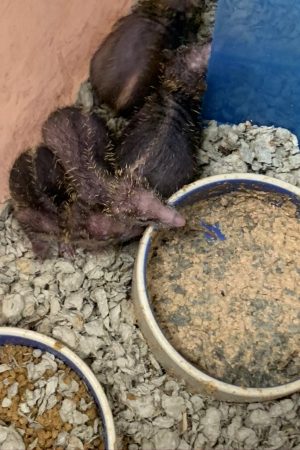
Tenrec colonies seal themselves in burrows 1 meter (3 feet) below ground to hibernate for periods of up to 9 months. Gas diffusion through soil is extremely poor, which means that throughout these months of hibernation, the oxygen level inside the burrow is progressively decreasing. Conversely, the level of carbon dioxide in the burrow is increasing. The result is a hypoxic-hypercapnic environment.
When the level of environmental oxygen decreases (i.e. the environment becomes hypoxic), the concentration gradient of oxygen between the air and blood simultaneously decreases. With less oxygen entering the body and being delivered to the cells, the capacity for aerobic energy production becomes limited. This can lead to cell and ultimately whole-organism death. Species whose natural habitats tend to be hypoxic (ex. burrowing species) often show adaptations to help them survive such conditions. One very important mechanism we see is the concurrent lowering of their rate of oxygen consumption with environmental oxygen availability. This is referred to as metabolic rate depression and is something we look for as an indicator of hypoxia tolerance. Previous research done by the van Breukelen lab found that tenrecs have a remarkable ability to lower their metabolic rate while active in normoxia. These results, compounded with the tenrecs’ burrow environment, presented an exciting opportunity as tenrecs had not yet been studied in hypoxic conditions. We predicted that the tenrecs would be tolerant to extremely low levels of oxygen and possibly even anoxia.
Upon arriving in Las Vegas, bright and early the next morning, Frank was kind enough to drive me and all my equipment to the lab and give me a tour of the buildings, faculty and facilities. This was the first time I got to see the tenrecs and I must say, they were adorable.
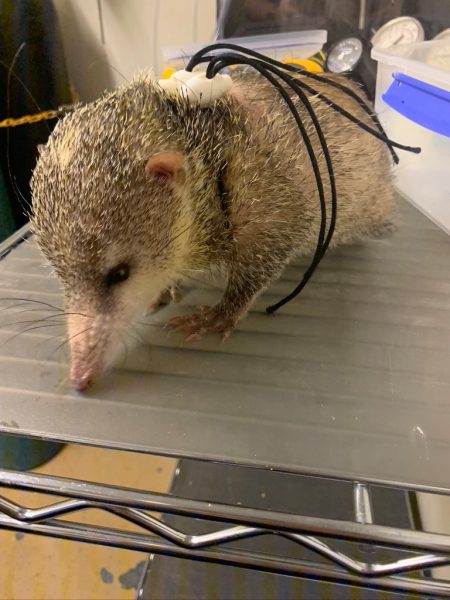
After my tour, we set up all of the equipment only to discover we did not have the proper sized regulator for the gas cylinders and would have to order one. Thankfully, Amazon Prime didn’t keep us waiting for long. Although an unfortunate delay, this opened up the chance for me to do some tourist things. Going to Las Vegas I had very much been hoping to find time to go the Strip and visit some of the iconic landmarks that I’ve seen in movies and on tv. I typically keep a very packed experiment schedule so I wasn’t sure if I would get a chance to see some of the attractions. I spent a day walking through the Bellagio, Caesar’s Palace, the Venetian, etc. I didn’t do any gambling, but I couldn’t go to Vegas and not at least walk around the world-famous casinos.
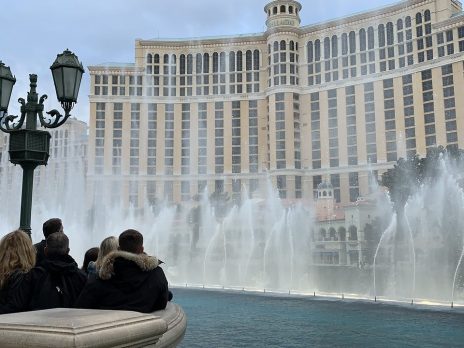
Monday morning our regulator arrived and we were ready to go. The last pieces of equipment were connected and all that was left to do was a quick test to make sure the setup was working. It wasn’t. At the time it seemed as if there was one thing causing the problem and we just had to figure out what it was. In reality, it was like that cartoon of exploding pipes and for every leak the plumber fixes three more appear. So we spent a full three weeks fixing leaks. Some problems were solved by replacing equipment. Others were solved more creatively, such as our state-of-the-art, custom-made stabilizing system for our rotameters (pictured below). I can honestly say that, in terms of troubleshooting my respirometry setup, I have never learned more than I did in those three long weeks.
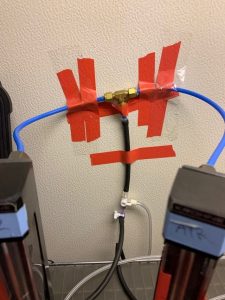
By some miracle, we eventually fixed all of our problems and, with COVID-19 on our tails, it was imperative to collect as much data as quickly as possible while international travel was still permitted. Our initial plan was to expose active (i.e. non-hibernating and non-torpid) tenrecs to progressively deeper levels of hypoxia while measuring metabolic and ventilatory parameters as well as body temperature. However, this quickly snowballed. We quickly decided to add hypercapnia and run all trials. Because hypoxia and hypercapnia often occur simultaneously in burrow environments, we decided that we didn’t want to only test hypoxia. Although not quite as lethal as hypoxia, hypercapnia poses its own complications, such as respiratory acidosis. The conversion of carbon dioxide to carbonic acid upon contact with water can lead to severe irritation around mucus membranes. As the level of environmental carbon dioxide increases, so too does the amount of acid being produced on the surface of the eyes, nose, and throat. The primary mammalian response to environmental hypercapnia is to hyperventilate. That being said, like with hypoxia, some animals have also adapted to be resistant to hypercapnia, wherein they are tolerant to much higher levels of environmental carbon dioxide before the onset of hyperventilation. This is termed a “blunted” response and is what we expected to see in the tenrecs.
Next, we decided to perform all of the experiments at two different temperatures. Previous work done by the van Breukelen lab has also shown that tenrecs are quite unusual in that they seem to be able to dissociate body temperature from metabolism. Body temperature and metabolic rate are typically tightly linked in mammals. So in hypoxia when we observe the metabolic rate depression that I previously mentioned, it is most often accompanied by a reduction in body temperature as well. Likewise, when metabolic rate increases, body temperature increases as well. However, because tenrecs do not exhibit this pattern, we were curious to see if they would continue this odd behaviour or perhaps the stress of hypoxia would override it and we would see the normal metabolic-thermoregulatory correlation. Based on previous data from the lab, Dr. van Breukelen advised we select 16 and 28°C. In order to do this, the animals were acclimated to each temperature for 4 days prior to experimentation.
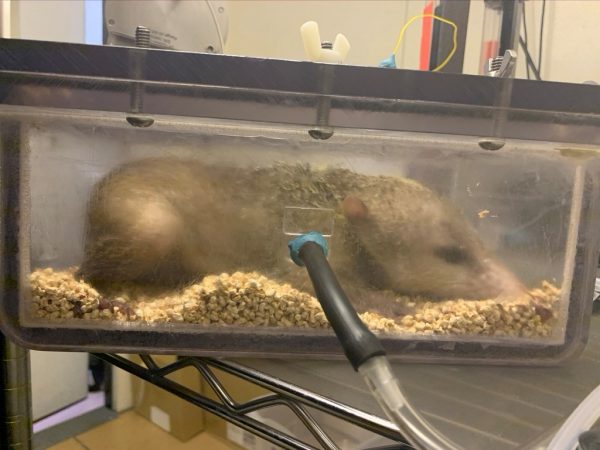
We tested hypoxia and hypercapnia separately so as to distinguish the individual influence of each condition. We performed pilot trials to determine the limit of the tenrecs’ hypoxia tolerance and determine a mid-level exposure of both hypoxia and hypercapnia. We discovered that the lethal threshold for tenrecs is approximately 2.5%, varying slightly by individuals. Although it’s not anoxia, 2.5% is still VERY impressive. Because of this, we chose 4% to be the extreme hypoxic exposure and 9% to be the mid-level exposure. For hypercapnia we chose 5% and 10% carbon dioxide. Lastly, we ended our experiments with a “recovery” period. This means that for the hypoxia experiments brought the oxygen level back to 21% (normal environmental oxygen level) and for hypercapnia we reduced the carbon dioxide level to 0%. Preliminary data analysis indicates metabolic rate depression in hypoxia and increased ventilation in both hypoxia and hypercapnia. I’m very excited to complete the data analysis and confirm our results.
Through the exchange I had the opportunity to work with a fascinating and rare species. The unusual tenrecs have challenged just about everything I thought I knew about hypoxia and homeostasis. I learned how to use the Sable Systems International software to measure and analyze metabolic parameters as well as observe different techniques they use for respirometry. We had planned for me to return this summer so that we could repeat all of our experiments during the hibernation season, however COVID-19 has unfortunately delayed this.
I would like to express my sincere thanks to Dr. van Breukelen for hosting me in his lab and for his ever-present guidance and support. I would especially like to thank Claudia who patiently spent every day running experiments with me from morning until midnight some days and working through all of our equipment struggles. Thank you to the diligent animal care team who put a lot of love into these surprisingly high maintenance animals. This exchange was a truly incredible experience that I feel so fortunate to have been granted. Because of this, I am exceptionally grateful to have received this funding through the RCN laboratory exchange, without which this project would not have been possible. I look forward to sharing the final results of our hard work and (fingers crossed) in the future return to Vegas to continue this work.